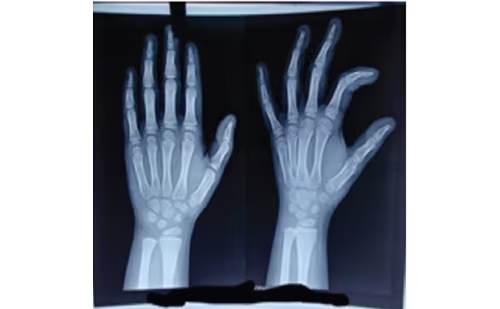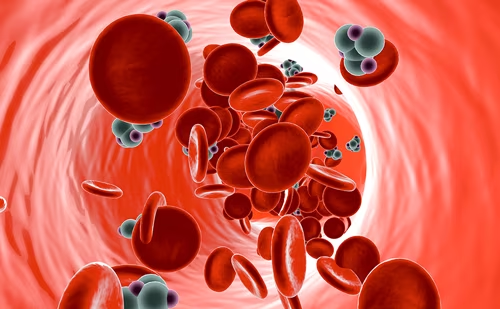As a practicing pediatric endocrinologist in Los Angeles, California, I have witnessed significant changes over the past 30 years. During that time, there has not been a single week in which the Center for Diabetes at the Childrens Hospital Los Angeles has not diagnosed at least three children with diabetes. Recently, that number has doubled. Because Los Angeles is one of the world’s melting pots, we make that diagnosis in hundreds of languages and in children of all races who have come from literally all corners of the world.
As a practicing pediatric endocrinologist in Los Angeles, California, I have witnessed significant changes over the past 30 years. During that time, there has not been a single week in which the Center for Diabetes at the Childrens Hospital Los Angeles has not diagnosed at least three children with diabetes. Recently, that number has doubled. Because Los Angeles is one of the world’s melting pots, we make that diagnosis in hundreds of languages and in children of all races who have come from literally all corners of the world.
Some of these children are babies. They will have to learn to walk and talk already burdened with diabetes. Others have just started school, and they must take their diabetes to school with them every day. Their challenge is to determine who will help them check their blood sugar levels and take their insulin shots and make sure they are safe. Still others are teenagers, facing the challenges of establishing themselves as individuals, developing a sense of independence from their parents and growing into adulthood. All of these children have parents who are shocked by the diagnosis of diabetes, overwhelmed by its demands, and concerned about the future. All of these children have siblings, grandparents, friends, and communities that are all affected by the diagnosis. What I see in Los Angeles is a diabetes landscape that is shared by my colleagues around the world. We are all experiencing the effects of the global increase in childhood diabetes. It is our challenge to bring this reality to the attention of decision-makers and, through the media, to the public.
Currently, it is estimated that at least half a million children have diabetes worldwide. The incidence of both type 1 and type 2 diabetes is increasing rapidly. The incidence of type 1 diabetes is increasing by about 3% (range about 2–5%) per year, with the greatest rate of rise in children under the age of four years. Type 2 diabetes was rare in pediatrics until recently. However, the epidemic of childhood overweight and obesity has been a catalyst for the development of type 2 diabetes in older youth and teens. Since 1990, there has been a rising incidence of type 2 diabetes in adolescents in Japan, so that type 2 diabetes is now seven times more common than type 1 in Japanese children. This represents an increase in incidence of more than 30-fold over the past 20 years. In the US, one in 523 children and young adults under the age of 20 years has diabetes; 79% of these are between the ages of 10 and 19 years.
Type 2 diabetes has a variable rate among these youth depending on race/ethnicity: 6% of white, 40% of Asian/Pacific Islander, 33% of black, 22% of Hispanic, and 76% of American Indian youth have type 2 diabetes. This is mirrored across the globe, so that South-East Asians, Pacific Islanders, Hispanics, African-Americans, and the Native North Americas (also called Aboriginals or First Nations in Canada and North American Indians in the US) are at high risk. In many countries, the greatest rates of type 2 diabetes are seen among immigrant children.
The rise in type 2 diabetes in youth relates to lifestyle changes that have occurred throughout the world. In almost every culture and every location children are becoming more sedentary and less physically active—even in school. This comes as a consequence of urbanization, global access to television, computers, and electronic games, and concerns about safety. Over the past decade, there have been profound changes in the quality, quantity, and source of food consumed in almost all countries. Processed food and sugar-added beverages offer greater caloric content but lower nutritional value at a lower cost. This has tipped the energy balance for many of the world’s children so that it is now estimated that 10–20% are overweight and obese. Since once established obesity becomes a chronic condition, there is an ever-increasing tendency to develop type 2 diabetes and cardiovascular disease.
To combat the increase in type 2 diabetes in youth, diabetes prevention initiatives have been developed around the world. The approach to prevention must take into account the pre-natal environment and early infant-feeding practices, as well as programmes that encourage healthy lifestyle habits for older children and youth. Pre-natal exposure to maternal diabetes is a risk factor for pediatric-onset type 2 diabetes. Therefore, efforts should be made to reduce gestational diabetes in women at risk. Low birth weight is also a risk factor because poor nutrition in utero interferes with the proper development and function of the pancreatic beta cells and insulin-sensitive tissues, potentially leading to insulin resistance later in life if obesity develops.
Encouraging and supporting breast feeding may minimize excessive energy intake and perhaps improve insulin sensitivity. Studies in both Pima Indian and Native Canadians have shown a lower prevalence of type 2 diabetes with breast-feeding during infancy1 and with exclusive breast feeding: a four-fold decrease in diabetes during adolescence.2
From 1992 to 2000, the ‘Trim and Fit’ program in Singapore decreased obesity prevalence from 16 to 14% in primary and secondary school students.3 In Japan, an exercise program decreased the prevalence of overweight from 40 to 37% among boys and to 32% among girls between the ages of 10 and 13 years.4 In San Antonio, Texas, the Bienestar school-based diabetes prevention program aimed at increasing knowledge, creating a network of social support, and changing the school environment, and showed a reduction in body fat with this comprehensive approach.5 The Center for Diabetes at the Childrens Hospital Los Angeles has developed a family-centered lifestyle programme for overweight and obese children, 49.5% of whom had multiple risk factors for metabolic syndrome and 10% of whom had impaired fasting glucose and/or impaired glucose tolerance. After 12 sessions, there was a significant decrease in body mass index (BMI), systolic blood pressure, lipids, and post-glucose-load glucose levels. Many other initiatives have been evaluated looking to, for example, decrease time spent watching television, reduce sweetened beverage intake, and increase healthy behaviors. Most have shown—at least in the short term— positive effect on risk for type 2 diabetes.
Most children with type 2 diabetes are overweight or obese at the time of diagnosis and have a family history of type 2 diabetes and signs of insulin resistance, such as acanthosis nigricans (darkening and thickening of the skin around the neck and in the axillae), high blood pressure, abnormal lipids, and polycystic ovary disease. Although the presentation may be more mild than that seen in type 1 diabetes, with less antecedent polyuria, polydypsia, and weight loss, some of these children also present with severe elevation of the blood glucose level, dehydration and coma. This condition—non-ketotic hyperosmolar coma—has been reported to have a high mortality rate, and underscores the fact that potentially all children with diabetes—type 1 or type 2—are at significant risk of developing a severe metabolic disturbance that can threaten their lives and health.
Diabetic ketoacidosis (DKA), seen mainly in children with type 1 diabetes, is the leading cause of mortality and morbidity in children with type 1 diabetes. DKA develops quickly and is the result of severe insulin deficiency. It occurs at the time of diagnosis of diabetes, or in established patients as the result of insulin omission or the inability to realize that insulin doses need to be massively increased due to infection, stress or intercurrent illness. There is wide geographical variation in the frequency of DKA at diabetes onset. The rate varies between 15 and 67% in Europe and North America, but is likely to be more common in developing countries. Risk factors for DKA include young age (under the age of four years), children without a first-degree relative with type 1 diabetes, those from countries with a low incidence of type 1 diabetes, and those from families of a lower socioeconomic status.
Through its World Diabetes Day campaign, the International Diabetes Federation (IDF) is focusing its efforts for 2007–2008 on diabetes in children. IDF has taken this approach because of the increase in all childhood diabetes, the devastating consequences of DKA, the fact that diabetes is different for children and their families (because children develop the devastating and life-threatening complication of central oedema, young children cannot explain their symptoms, and before toilet training it is hard to appreciate excessive urination), and the chance to proliferate prevention programs for type 2 diabetes. The campaign has mobilized the world’s diabetes care providers for children to be able to accomplish the following goals:
- increase awareness about diabetes in children;
- reduce the incidence of DKA;
- increase type 2 diabetes prevention initiatives;
- support children with diabetes in developing countries who lack access to care and supplies.
There are myriad materials—pamphlets, posters, position statements, journals, a youth charter, crayons, pins—to support this mission. We must all participate if we are to succeed in our ultimate goal of improving the lives of those children who are touched by diabetes and, crucially, of finding the prevention and cure of child-onset diabetes. This is sorely needed in Los Angeles, as well as in every part of the world.
World Diabetes Day 2007–2008—The Year of the Child
On November 14, the world celebrated the first United Nations (UN) observance of World Diabetes Day. The passage of UN Resolution 61/225 on World Diabetes Day made the existing day an official UN day, beginning in 2007. The celebration included events at the UN in New York and thousands of events spanning the globe. This year’s campaign had three calls to actions: the lighting of monuments in blue around the world; a 246-step walk, with each step representing one million of the 246 million people with diabetes worldwide; and proclamations by local, regional, and national politicians in support of World Diabetes Day. All were a resounding success. See the events pages at www.worlddiabetesday.org for further information and pictures.
More than 250 monuments and iconic buildings joined the Empire State Building in being lit up in blue to mark World Diabetes Day. They included the London Eye, Sears Tower in Chicago, Niagara Falls on both the Canadian and US sides, Christ the Redeemer, the Leaning Tower of Pisa, the Alexandria Library, the Prudential Tower, Tokyo Tower, the Kuwait Towers, and the world’s tallest building: the Taipei 101. Mayors, governors, and other politicians joined forces with the global diabetes community to mark World Diabetes Day. At the events in New York, a proclamation signed by Mayor Michael Bloomberg was read out at the diabetes rally. His proclamation was joined by New York’s Governor Eliot Spitzer, the US House of Representatives, and hundreds of others across the US and the world.
In New York, the International Diabetes Federation, joined by partners from the American Diabetes Association and Juvenile Diabetes Research Foundation, the American Association of Diabetes Educators, and others, formed a human blue circle on the lawn of the UN’s Rose. Immediately after the circle, the participants took a 246-step march from the lawn to participate in a diabetes rally at Guastavino’s under the 59th Street Bridge.
New York was just one location celebrating the day. Worldwide, human blue circles were formed, walks organized, and monuments lit to mark World Diabetes Day and draw attention to the 246 million people living with the disease.
The aim of World Diabetes Day is to bring awareness of diabetes to the widest possible audience. World Diabetes Day 2007 and 2008 form part of IDF’s Year of the Child, which will draw attention to the needs of children with diabetes, make governments aware that all diabetes is on the rise in children, and firmly establish the message that no child should die of diabetes.■







